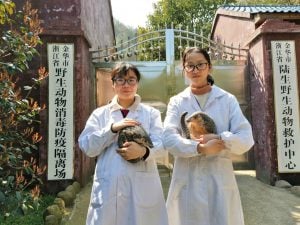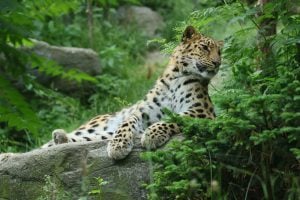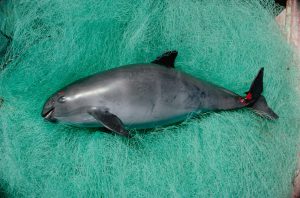Elephants, big cats and rhinos typically grab the headlines at high-level international discussions on trade in wildlife. Also on the agenda are online trade, using technology to trace animal parts, and how to reduce consumer demand.
The triennial meeting of the 183 countries signed up to the Convention on International Trade in Endangered Species of Wild Fauna and Flora (CITES) kicks off this weekend in Geneva, which took over as host city from Colombo following the bombings in Sri Lanka in April.
CITES came into force in 1975 and regulates the international trade in over 35,000 species of plants and animals, their products and derivatives. Its aim is to safeguard species’ survival in the wild by ensuring that international trade is sustainable, legal and traceable.
This year’s meeting is being heralded as particularly important, following the publication in May of a landmark report on the state of nature worldwide and ahead of next year’s Convention on Biological Diversity (CBD) in Kunming, China.
The report, from the Intergovernmental Science-Policy Platform on Biodiversity and Ecosystem Services (IPBES), contained overwhelming evidence that nature is declining globally at rates unprecedented in human history, damaging economies, food security and health.
Next year’s CBD meeting will see governments negotiate a worldwide strategy to end this trend, replacing the current plan, which was agreed in Aichi, Japan in 2010. An update from the CBD last November said it was “deeply concerned that, despite many positive actions… most of the Aichi biodiversity targets are not on track to be achieved, which will jeopardize… the planet’s life support systems”.
In any case, the Aichi targets do not include a specific target on wildlife trade, despite it being recognised by the IPBES report as the second biggest driver of biodiversity loss, after change in land and sea use.
Campaigners want to see over-exploitation of nature and related international trade targeted in the post-2020 biodiversity strategy. “We need an integrated approach across all these intergovernmental agreements. We need to make sure they work together and that wildlife trade issues are incorporated into the post-2020 targets,” said Dr Richard Thomas, global communications co-ordinator at Traffic, a campaign organisation.
New discussions
The last meeting of CITES in 2016 broke new ground on some issues, which will be a part of this year’s discussions too. One example is how best to use technology such as electronic tags to improve the traceability of wildlife parts, so that only species harvested legally are traded. “It could potentially be a very powerful tool to ensure legal and sustainable supply in wildlife trade. Technology-wise it’s feasible now, it just needs political will to implement it,” said Thomas.
Methods to quash online trade in wildlife will also be under the spotlight, including how governments cooperate with online and social media platforms, search engines and e-commerce sites. Online trade has become harder to monitor since traffickers have shifted towards “closed” social media platforms. Conservation campaigners want to see policing of underground online marketplaces become a top enforcement priority.
Ideas to support governments with training and funding to change consumer behaviour and thereby reduce demand in illegal wildlife products will also be discussed.
Protecting species
CITES will also debate how to enhance protection of individual species threatened by trade. Several issues around big cats, particularly lions, tigers, leopards and jaguars, have been put forward for discussion. Tiger farms have become a concern, particularly in China, Vietnam, Laos and Thailand. Conservationists are concerned that these farms are stimulating demand for tiger parts, making it harder to protect tigers in the wild.
At the last CITES meeting in 2016, it was agreed that officials from the convention would audit the farms to ensure they were not linked to illegal trade. But this has not happened, according to Paul De Ornellas, chief wildlife officer at WWF. “We really want to see these establishments closed down so they can’t contribute a demand for tiger products that’s putting pressure on wild tigers,” he said. CITES will discuss a ban on breeding tigers for commercial trade, proposed by India.
Another big cat seen to be threatened by captive breeding is the lion, whose bones are increasingly replacing tiger’s in Chinese traditional medicine. Most are sourced from “canned lion” farms in South Africa, which are estimated to have a population of around 8,000 animals – around three times the country’s wild lion population. In these farms, cubs are taken away from their mothers once they are a few days old, and will eventually be shot by trophy hunters.
CITES allows South Africa to legally export a certain quantity of lion bones from captive breeding, leading conservationists to fear increased demand on wild populations. Bones from leopards and jaguars have also been found labelled as tiger products in Southeast Asia. Niger and Togo have submitted a proposal that CITES signatories should eliminate the use of lion bones. The CITES secretariat has proposed creating a specific task force on big cats, to investigate enforcement of the law on trade in big cats from Asia, Africa and Latin America.
Meanwhile, data analysed by Traffic appears to show a slowing of the illegal ivory trade since China’s closure of the domestic ivory market in 2017. However, the organisation caveats that though the market was disrupted, a lag in obtaining data means there is not yet clarity on whether it has been sustained. Recently, some exceptionally large quantities of ivory have been seized in China and Vietnam, which could indicate large-scale movements of ivory from Africa to Asia, it said.
New trade hub
In fact, Vietnam has now taken over from China as the leading destination for illegal ivory, according to CITES’ database on seizures of elephant specimens. Several conservation charities have noted the country’s growing role as a hub for trade in illegal wildlife, including rhinos, tigers, pangolins and sea turtles. In May, five tonnes of pangolin scales in a shipment from Nigeria were seized in Vietnam. “Vietnam is headed as a country for concern and one that we as WWF would really like to see taking much stronger steps to address wildlife trafficking and enforce its CITES commitments,” said De Ornellas.
CITES can punish countries that are not complying with the convention by prohibiting all legal trade in wildlife and plants. Some conservation groups such as the Environmental Investigation Agency are calling for CITES to begin the process for levelling sanctions against Vietnam. Laos is already going through this process, with several groups calling for commercial trade in wildlife to be banned in the country until it clamps down on the open trade in tiger products, elephant ivory and rhino horn.
Listing questions
CITES will also consider 56 new proposals submitted by governments to change the levels of protection that CITES provides to species of wild animals and plants. Species listed on Appendix II are recognised as at-risk and require permits for their trade, while those threatened with extinction are listed on Appendix I and cannot be traded.
Species due to be discussed include the giraffe, which is currently not listed under CITES, but which has seen population declines of up to 40% in the past 30 years. A group of African countries including Kenya, Mali and Senegal want the species added to Appendix II.
The United States and Sri Lanka want CITES to consider listing some songbirds, which are increasingly taken from the wild in parts of Southeast Asia. One of the more novel species to be discussed is the woolly mammoth, extinct in the wild for around 4,000 years. Israel believes that the unregulated trade in mammoth ivory provides a cover for the sale of illegal elephant ivory.








